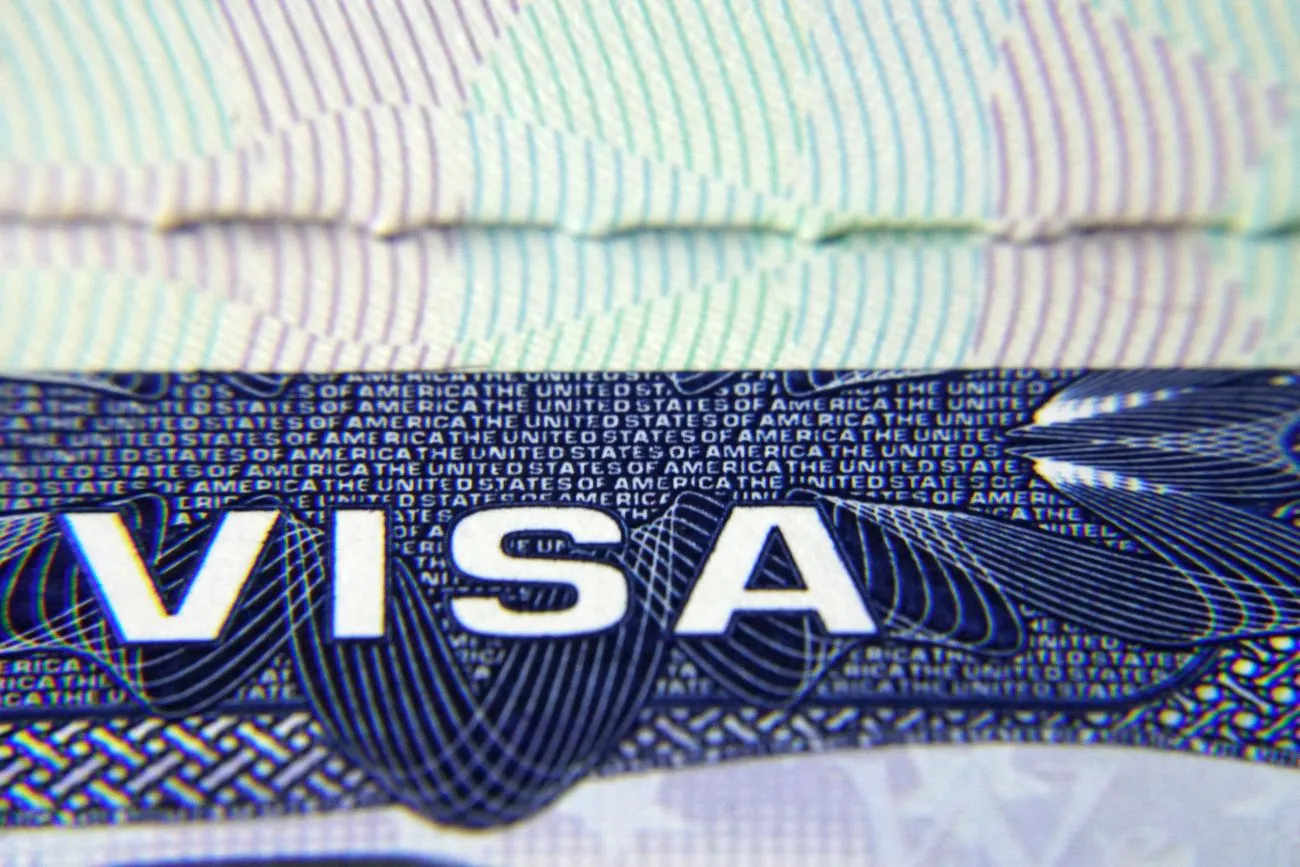If you’re visiting the United States for work, vacation, or other activities, you may need a U.S. visa. A visa allows you to temporarily stay in the U.S., but there are different types of visas, depending on your reason for travel. In some cases, you may not need a visa at all.
Learn how to apply for a U.S. visa step-by-step and get information about the various kinds of visas.
 Larcsky789 / Shutterstock
Larcsky789 / ShutterstockSteps to Apply for a U.S. Visa
Travelers can apply for a U.S. visa at a consulate or embassy in their country by following these steps:
- Determine if you need a visa.
- Choose the type of visa to apply for.
- Complete the appropriate application form.
- Pay the application fee.
- Compile and submit relevant documents.
- Schedule and attend the visa interview.
- Wait for processing.
The process and order of steps may vary, depending on the embassy or consulate you apply through. Some travelers choose to hire immigration lawyers to help the process go as smoothly as possible.
Do You Need a Visa?
If you’re from Canada, the UK, or Australia, you may not need a visa or other type of authorization to visit the United States. Otherwise, check if your country participates in the U.S. Visa Waiver Program (VWP). This program provides waivers to international travelers from any of the 39 participating countries. Travelers visiting under VWP must get approved travel authorization using the Electronic System for Travel Authorization and an e-Passport.1
If your country isn’t listed under the VWP, you may need to apply for a visitor or transit visa.
Choose the Visa Type
U.S. visas are grouped into four main categories:
- Temporary non-immigrant visa.
- Permanent (immigrant) work visa.
- Student and exchange visitors.
- Temporary visit for business.
Under these categories, there are about 185 types of U.S. visas. The U.S. government visas are issued for academic, vocational, training, tourism and business purposes and fall under B-1 and B-2 visa classifications. Individuals traveling for purposes included in both B-1 and B-2 visas may get a combination visa.
The primary difference between the types of visas is the length of time visa holders can stay before they must leave the country. Visa validity ranges from three months to three years.
Complete Application Form
Travelers applying for non-immigrant visas must complete a DS-160: Online Nonimmigrant Visa Application.2 Some individuals may need to complete other forms based on their purpose for visiting, such as:
- DS-156E: Nonimmigrant Treaty Trader/Investor Application3;
- DS-157: Supplemental Nonimmigrant Visa Application4;
- DS-158: Contact Information and Work History for Nonimmigrant Visa Applicant5, and;
- DS-2019: Certificate of Eligibility for Exchange Visitor Status6.
These applications require personal information, such as full name, date and place of birth, work, and marital status. Further application sections are used for verifying security and background information.
Pay the Application Fee
U.S. visa applicants must pay application processing fees and other costs to submit their forms, and fees vary depending on the visa category.
As of 2022, the visa application processing fees are:
- Non-Petition-Based Non-Immigrant Visa: $160
- Petition-Based Visa Categories: $190
- E – Treaty Trader/Investor, Australian Professional Specialty Category Visa: $205
- K – Fiancé or Spouse of U.S. Citizen Category Visa: $265
- Border Crossing Card: $160 for those aged 15 and older, $15 for those under 157
Depending on individual circumstances, travelers may be subject to additional fees. This may include visa fraud and detection fees, immigrant visa petitions, diversity visa lottery fees, and other special services.
Fees are non-refundable, even if your application is canceled or rejected.
Submit Documents
In addition to completing the necessary application form, you must also provide documents to verify the information you provide. Applications may require the following documents:
- Valid passport.
- One photograph.
- Receipt of visa processing application fee payment.
- Social media details from the last five years.
- Previous U.S. visas.
- Travel itinerary.
- Invitation letter.
- Sponsorship documents.
- Property documents.
- Employment documents.
- Family documents, such as birth certificate and marriage certificate.
- Physician letter.
Other types of visas may require documents that prove admission to a U.S. educational institution or a job offer from a U.S. employer. Keep these documents on hand for both the application and interview.
Visa Interview
Following application, visitors must schedule a visa interview. If travelers are under 13 years or over 80, they’re generally not required to complete an interview.
You’ll schedule your visa interview appointment at the U.S. Embassy or Consulate in the country you live in. You can complete your interview elsewhere, but it may be more difficult to get a visa outside your country of residence.
Wait times for interviews vary by location, season, and visa category, so it’s recommended to apply well ahead of time. Applicants can check the estimated wait times for non-immigrant visa interview appointments, and some may be eligible to have the in-person interview requirement waived.8
Wait for Processing
Following a complete interview, applicants must wait for their application to be processed. Processing times can vary, and estimated wait time doesn’t include the time required to return passports to applicants or time for administrative processing.
At the end of the interview, the consular office may inform the applicant if their application has been refused or requires further administrative processing. Administrative processing times can vary according to individual circumstances and the type of visa applied for. At the end of the administrative processing period, the consular officer determines whether the applicant is qualified for their applied visa.
Temporary Non-Immigrant Visa
Temporary non-immigrant visas are intended for visitors entering the U.S. for employment lasting a fixed period of time and not considered permanent or indefinite. Each of the visas under this category requires a prospective employer to file a petition with the U.S. Citizenship and Immigration Services (USCIS), and the petition must be approved before travelers can apply for a work visa.9
There are many kinds of workers that can qualify for this visa, and each may need to apply for a different visa classification.
Permanent (Immigrant) Workers
The USCIS issues approximately 140,000 immigrant visas, also known as green cards, each fiscal year for non-citizens and their spouses and children who are looking to work in permanent roles in the United States. Applicants with the right combination of skills, education and work experience may be eligible for this type of visa and qualify for permanent residence.
Generally, applicants must have a preexisting offer of employment from an eligible U.S. employer. The five types of employment-based visas are:
- First preference EB-1;
- Second preference EB-2;
- Third preference EB-3;
- Fourth preference EB-4, and;
- Fifth preference EB-5.
These employment classifications are based on U.S. national interest and general labor qualifications.10
Student and Exchange Visitors
Student and exchange visitor visas cover academic and vocational students, as well as those enrolled in cultural or educational exchange programs. These are separate from immigrant visas.
Student visas are divided into the following classifications:
- F-1: Academic students.
- F-2: Spouses and children of F-1.
- F-3: Canadian or Mexican national academic commuter students.
- M-1: Vocational students.
- M-2: Spouses and children of M-1.
- M-3: Canadian or Mexican national vocational commuter students.
- J-1: Exchange visitors.
- J-2: Spouses and children of J-1.11
Temporary Visit for Business
Temporary visit for business visas are intended for professionals visiting the U.S. for short-term business purposes. Applicants must demonstrate that the purpose of their trip is of legitimate nature and must present a plan over a specific period of time not exceeding six months. They must also have sufficient funds to cover their travel expenses.
Eligible business visits include:
- Consulting with business associates;
- Negotiating contracts;
- Short-term professional training;
- Transiting through the U.S.;
- Settling an estate, and;
- Traveling for professional conference.12


